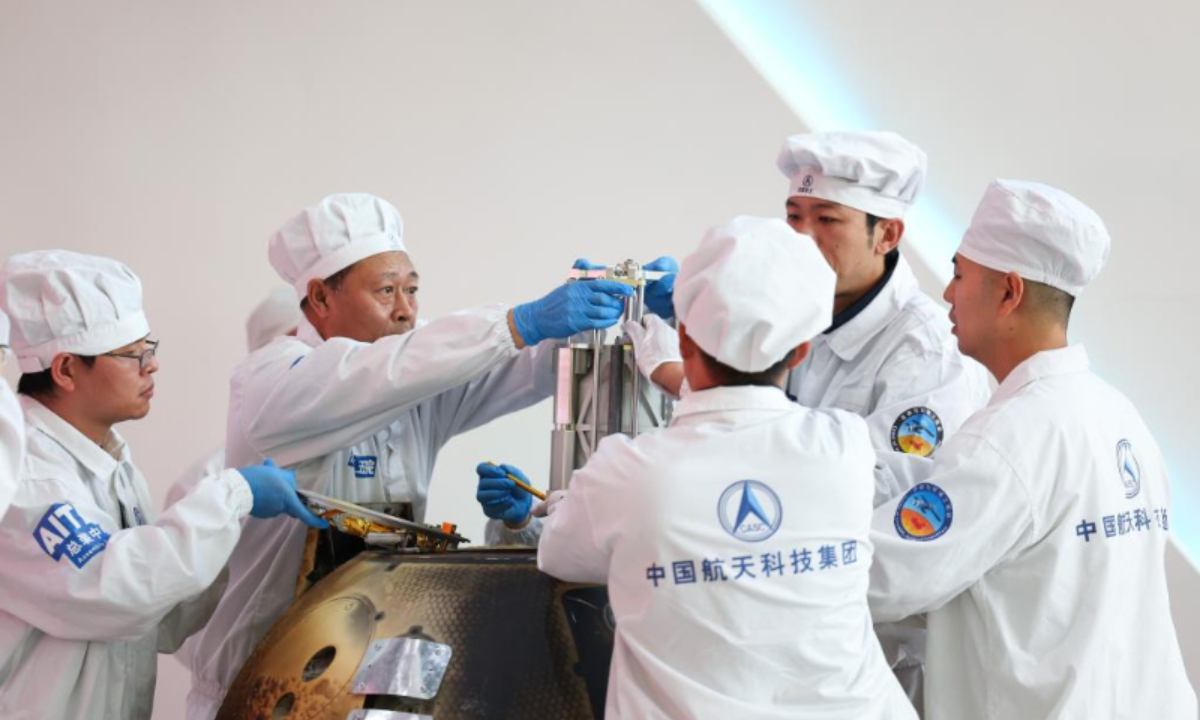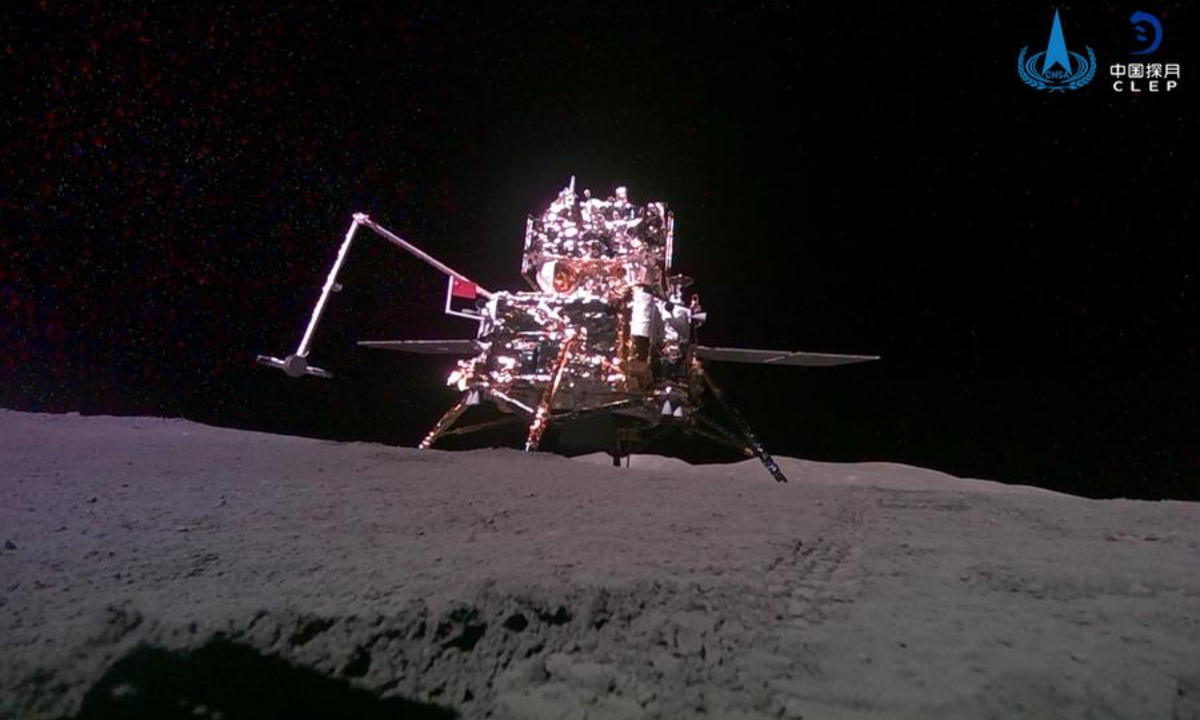
Photo:Xinhua
The first batch of soils and rocks from the Moon's far side ever obtained by mankind weighs a total of 1,935.3 grams, which was brought safely back by China's Chang'e-6 mission, according to an announcement by the China National Space Administration (CNSA) on Friday during a handover ceremony in Beijing. China welcomes the sharing of data with scientists around the world and maintains an open attitude toward cooperating with the US, CNSA officials said, but the US should remove obstacles including the Wolf Amendment that hinders such collaboration.
On Friday morning, the samples were handed over by Zhang Kejian, director of CNSA, to Ding Chibiao, Vice President of the Chinese Academy of Sciences (CAS), where the samples will be safely transported to a special laboratory, the Global Times learned from the CAS.
Later, ground application system researchers will commence the planned storage, processing, and scientific research work. This marks the transition of the Chang'e-6 mission from the engineering implementation phase to a new phase of scientific research.
In comparison with its predecessor, the Chang'e-6 mission collected 204.3 grams more than Chang'e-5, which brought back Moon's dust from its near side four years ago.
While to date only 77.7 grams, or about 4.5 percent, of the lunar samples retrieved by Chang'e-5 have been distributed, the scientific achievements already encompass various fields such as lunar formation, evolution, space weathering processes and mechanisms, and resource utilization.

This photo taken and beamed back to Earth autonomously by a mini rover released from the lander-ascender combination of Chang'e-6 probe shows a view of the combination itself on the lunar surface, June 3, 2024. Photo:Xinhua
More than 80 findings, including the discovery of a new lunar mineral named "Chang'e stone" and the youngest lunar basalt, have been published in prestigious academic journals such as Science, Nature, and National Science Review. Many of these findings have garnered widespread attention and praise from the global academic community.
The lunar samples by Chang'e-6 from the far side of the Moon hold even more unique scientific significance and will enhance our understanding of lunar evolution. They will accelerate the peaceful exploration and utilization of lunar resources, contributing significantly to humanity's scientific knowledge, according to the CAS statement sent to the Global Times.
At a press conference on Thursday, Bian Zhigang, deputy head of CNSA, said that scientists from around the world are welcome to apply for research access to these lunar samples, but cooperation with the US in this regard remains difficult.
China has always maintained an open attitude toward space cooperation with the US, Bian said, noting that China has established a working group for Earth science and space science collaboration with the US side and a dialogue mechanism on civil space cooperation with them.
At the request of the US, China also established a mechanism for exchanging orbital data from Mars probes to facilitate joint assessment of collision risks, ensuring the smooth and continuous progress of both countries' Mars exploration programs.
"The main obstacle to China-US space cooperation lies in US domestic laws such as the Wolf Amendment, which hinder collaboration between the two countries," Bian said.
Bian anticipated that US scientists would like to participate in the exploration of the Chang'e-6 samples but "if the US genuinely wishes to engage in normal space exchanges with China, they should take concrete steps to remove these obstacles."
A video clip of an interview by the China Central Television has gone viral over the past two days on Chinese social media platforms. In the interview with a Chinese senior research fellow, she revealed that with the ongoing trek of China's Yutu-2 lunar rover, the US has shown keen interests in discussing with Chinese experts how to protect humanity's "historical sites" on the Moon - including US' astronaut Neil Armstrong's footprints left in 1969.
Responding to worries from the American negotiation team, Li Hongbo, a senior research fellow at the China Aerospace Science and Technology Corporation, said in the interview that they do not need to worry that China's Yutu-2 rover will "run over" Armstrong's footprints.
"It's very interesting. People come to you and negotiate stuff only when you are strong and capable. When we don't have the ability to place our rover on the Moon, there was never a question of who the lunar soils and minerals belong to or how we should protect 'historical sites' there," Li said.
Yutu-2 is currently operational as the longest-lived lunar rover and the first lunar rover traversing the far side of the Moon.





